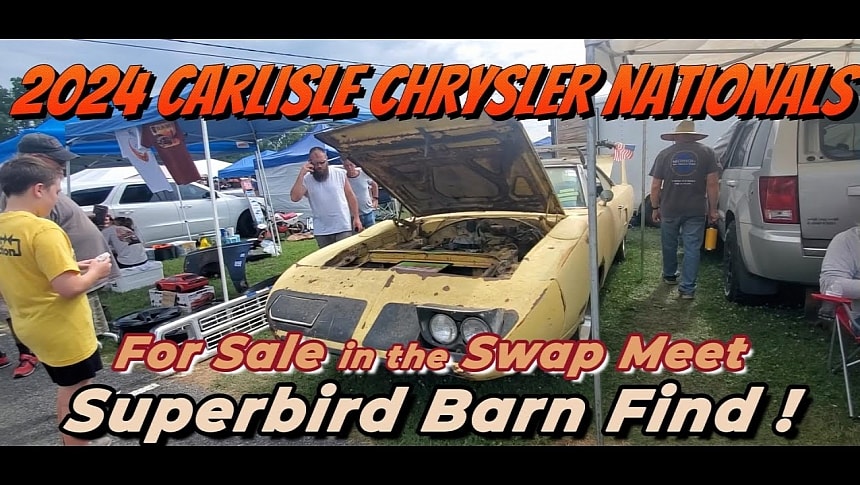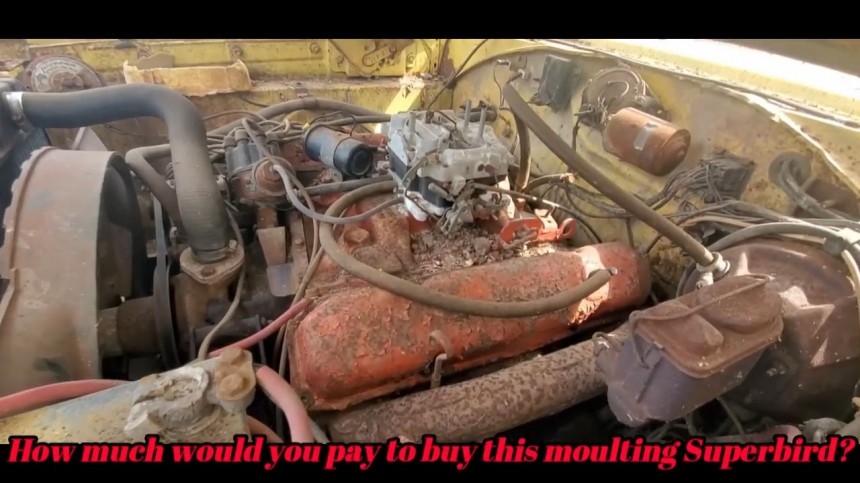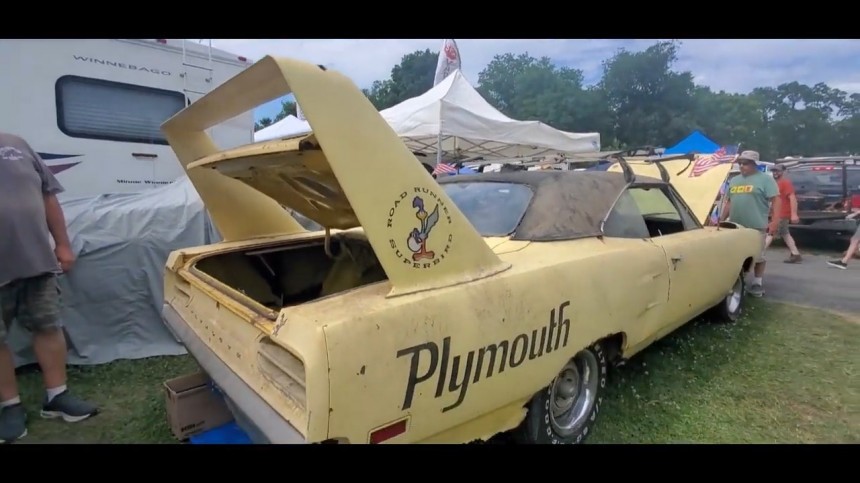If you want to start a very intense debate among Mopar fanatics and car historians, put on the most innocent face possible and, in the suave voice of a four-year-old, ask how many Superbirds were ever made. Grab the popcorn, the show will last a bit, but at the end, after demanding arguments, the number most probably agreed upon will be 1935. One of those holy grails is for sale.
To be fair, we can say with uttermost certainty that at least 1,920 Plymouth Road Runner Superbirds were assembled for the 1970 model year for sale to the public. The entire production run was finished between October 18 and December 15, 1969, and it was meant to allow the most radical Road Runner ever to compete in NASCAR.
Truth be told, Plymouth realized it kicked itself in the head when the corporation allowed Richard Petty to leave to rival Ford after denying the racing driver a Plymouth car that could keep up with the 1969 Dodge Charger Daytona. The Superbird was the quick fix, and The King came back, winning another five titles for Mother Mopar and becoming the most prodigious NASCAR racer of all time.
Among the ‘1,920 or more’ Superbirds, there were ranks divided into three main classes: U, V, and R – signifying engine codes. More to the point, each letter represented one of the three power options available for the 1970 Road Runner – two 440s and the 426. That was it – no other engines could be installed in a winged Road Runner (after all, the cars were supposed to fight high-speed wars against Dodges and Torinos).
The most common of the three was the base Super Commando, the U-code 440 cubic-inch RB block (7.2 liters) fitted with a single four-barrel carburetor, good for 375 hp and 480 lb-ft (380 PS, 651 Nm). 1,162 of them were spread throughout America (and a few in Canada) and sold for civilian use. The next step was to remove the four-throat carb and strap three two-barrels in its place to create the 440 Six-Barrel (the Six-Pack was the Charger Daytona’s call sign).
The extra fuel-air mixing capacity added fifteen extra horses and ten more pound-feet, putting the 440-6 on par with the Street Hemi in terms of torque. 390 hp and 490 lb-ft (395 PS, 664 Nm) wasn’t the cream of the crop, however, because the 426-cubic-inch (seven liter) elephant still reigned supreme, at 425 hp and 490 lb-ft (431 PS, 664 Nm).
665 Superbirds were armed with a 440-6 motor, the V-code plant that is regarded as a more reliable Mopar engine than the Street Hemi (of which 93 copies made it at the opposite end of that gigantic wing with the road runner bird decals). But no matter which version we’re talking about, an example demands high premiums in today’s market.
Naturally, high-end cars in good, great, or excellent condition are the most expensive, but even the rattiest Superbird left on Planet Piston will still ask – and most probably get – a high price. Look at the example in the attached video – a yellow barn find survivor with numbers matching the drivetrain (a four-speed with a pistol grip shifter) and a ‘V’ on the fender tag in the engine code section.
It doesn’t take a forensic investigation to decide the motor is not original and that the four-barrel carburetor doesn’t belong in the V-code Superbirds, but even so, this car will go to a potential buyer for $125,000 (or best offer, if the six-figure number will not draw a payer, but note that the seller turned down multiple offers from $85k to $115k).
We don’t know the car’s history, mileage, or other all-important details, but its condition makes it savable. Rust holes on the rear quarters – typical for Mopars of the sixties and seventies – are the deepest wounds in the shell, and the interior is what you’d expect from a barn find. Nonetheless, there’s no such thing as ‘too far gone,’ just not enough cubic dollars.
Truth be told, Plymouth realized it kicked itself in the head when the corporation allowed Richard Petty to leave to rival Ford after denying the racing driver a Plymouth car that could keep up with the 1969 Dodge Charger Daytona. The Superbird was the quick fix, and The King came back, winning another five titles for Mother Mopar and becoming the most prodigious NASCAR racer of all time.
Among the ‘1,920 or more’ Superbirds, there were ranks divided into three main classes: U, V, and R – signifying engine codes. More to the point, each letter represented one of the three power options available for the 1970 Road Runner – two 440s and the 426. That was it – no other engines could be installed in a winged Road Runner (after all, the cars were supposed to fight high-speed wars against Dodges and Torinos).
The extra fuel-air mixing capacity added fifteen extra horses and ten more pound-feet, putting the 440-6 on par with the Street Hemi in terms of torque. 390 hp and 490 lb-ft (395 PS, 664 Nm) wasn’t the cream of the crop, however, because the 426-cubic-inch (seven liter) elephant still reigned supreme, at 425 hp and 490 lb-ft (431 PS, 664 Nm).
665 Superbirds were armed with a 440-6 motor, the V-code plant that is regarded as a more reliable Mopar engine than the Street Hemi (of which 93 copies made it at the opposite end of that gigantic wing with the road runner bird decals). But no matter which version we’re talking about, an example demands high premiums in today’s market.
It doesn’t take a forensic investigation to decide the motor is not original and that the four-barrel carburetor doesn’t belong in the V-code Superbirds, but even so, this car will go to a potential buyer for $125,000 (or best offer, if the six-figure number will not draw a payer, but note that the seller turned down multiple offers from $85k to $115k).
We don’t know the car’s history, mileage, or other all-important details, but its condition makes it savable. Rust holes on the rear quarters – typical for Mopars of the sixties and seventies – are the deepest wounds in the shell, and the interior is what you’d expect from a barn find. Nonetheless, there’s no such thing as ‘too far gone,’ just not enough cubic dollars.



















































